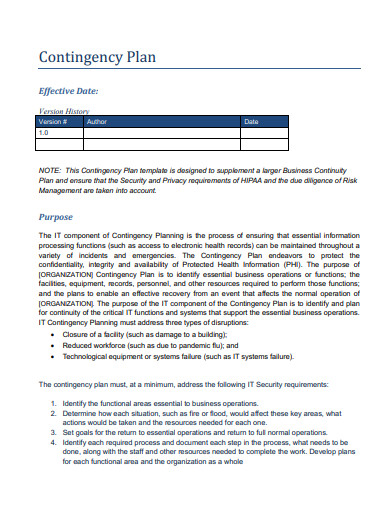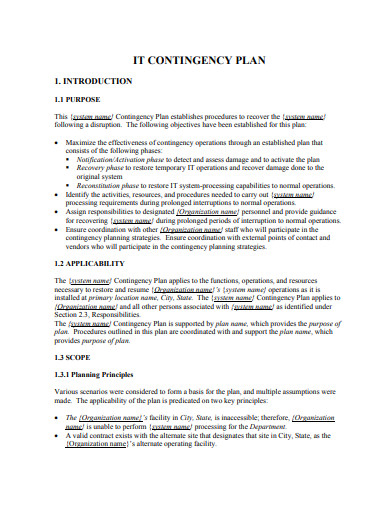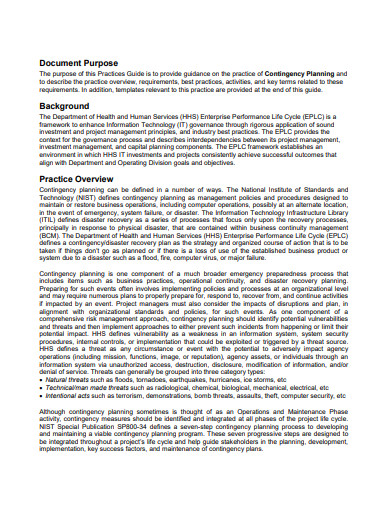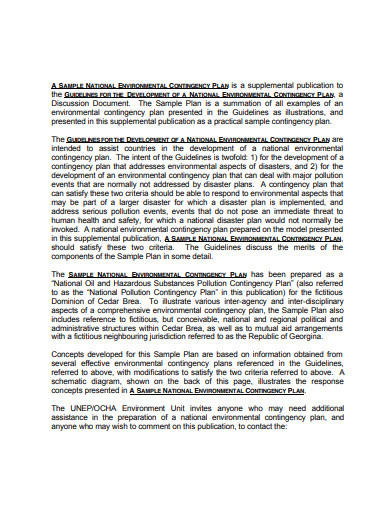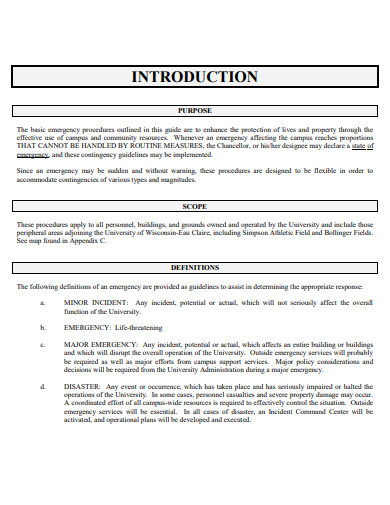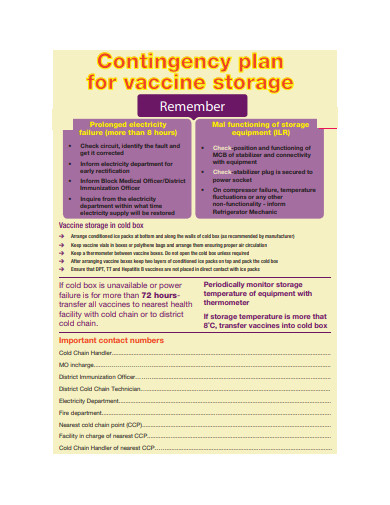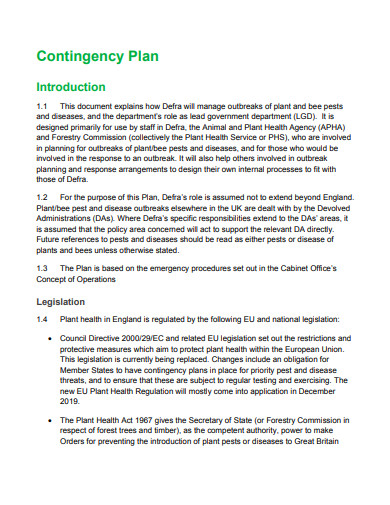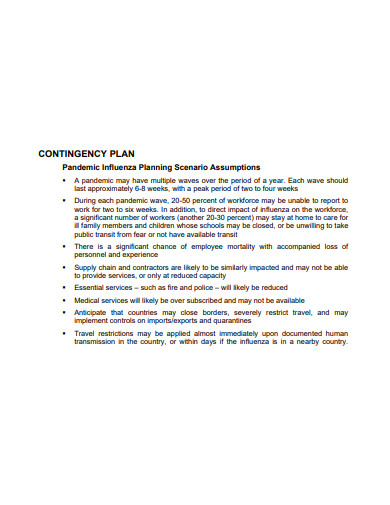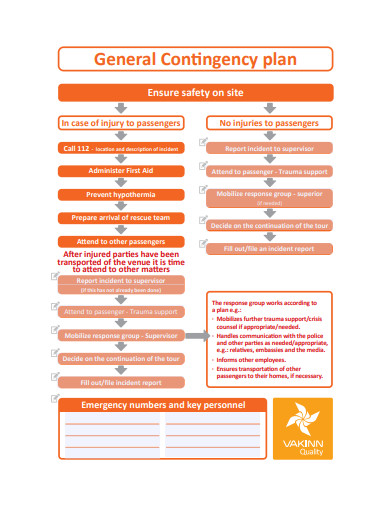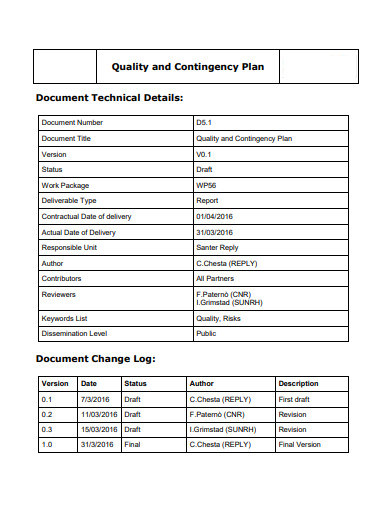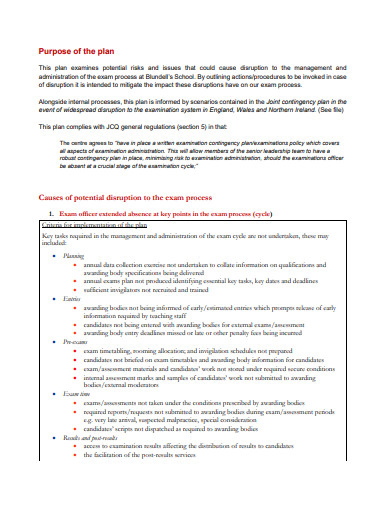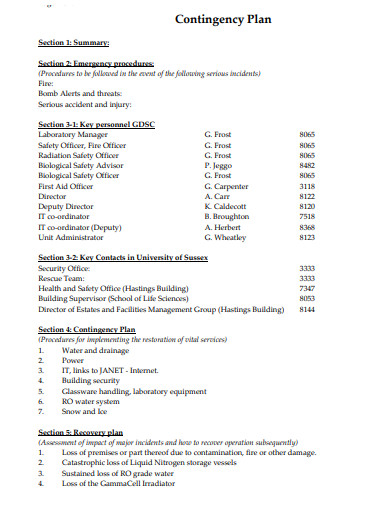16+ Contingency Plan Examples to Download
Natural disasters like fires, floods, and earthquakes happen unexpectedly. They have an impact on every organization’s businesses or projects. Since such events are unpredictable, all that we can do is prepare for what is to come. This is one of the reasons why a contingency plan is in place to facilitate the mitigation of these damages. In this article, we will explore ways to create such schemes to make it easy for you.
16+ Contingency Plan Examples
1. Contingency Plan
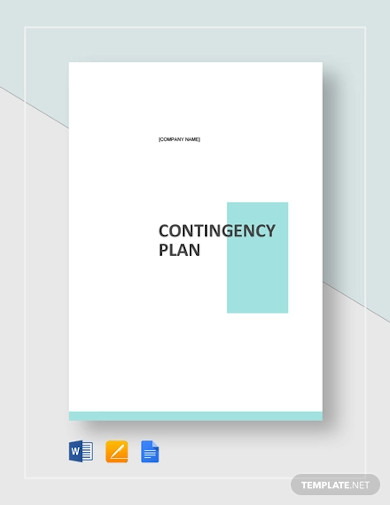
2. Contingency Sales Plan
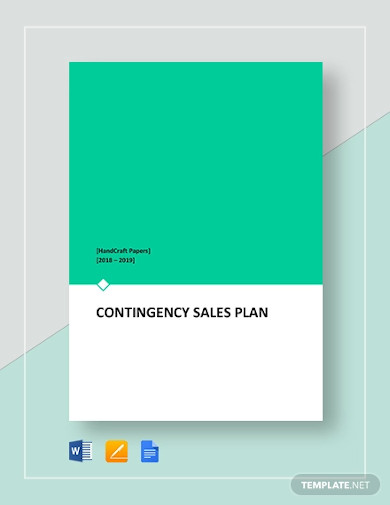
3. HR Contingency Plan Example
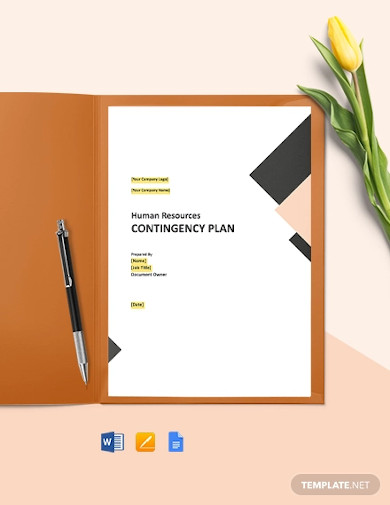
4. Work From Home Contingency Plan Template
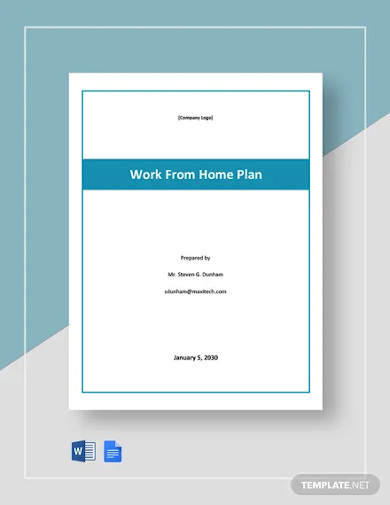
5. Sample Contingency Plan
6. IT Contingency Plan
7. Medical Contingency Plan
8. Disaster Contingency Plan
9. Emergency Contingency Plan
10. Risk Contingency Plan
11. Health and Safety Contingency Plan
12. Generic Contingency Plan
13. Pandemic Contingency Plan
14. Formal Contingency Plan
15. Quality and Contingency Plan
16. Exam Contingency Plan
17. Research Contingency Plan
What Is a Contingency Plan?
A contingency plan is a scheme that highlights an organization’s activities in response to unforeseen events that will damage its operations. Furthermore, it assists the job risk assessment of companies in unveiling deficiencies, so they can take action if things don’t go their way. Contingency plans are a useful tool that prepares corporate entities for disadvantages brought by any unwanted circumstance.
How To Organize a Contingency Plan
As shown by recent Statista research, with the level of crisis the world is facing to this day, having a well-written contingency plan is vital for every organization out there. One can never really know what kind of crisis will occur tomorrow. Here are some tips on how to organize a contingency plan.
1. Prepare a List of Resources
Whether it is a large corporation or small business, resources are much-needed to sustain them. You are preparing a complete list of the resources like the budget and equipment you have to deal with certain events. This will make it easier for you to know what your company has and lacks to prevent risks from taking place.
2. Create Your Plan’s Draft
When starting to compose your plan, you have to make sure that it follows the standard document flow. Try to use a format that will keep your contingency plan neatly organized and easy to understand. That way, it will be effective once used during an emergency.
3. Propose Your Draft to Stakeholders
Once you have your draft ready, present them to the company stakeholders. Doing so allows you to gather useful insights that will make your presentation even better. Keep an open mind on what you can do to make the contingency plan a lot better.
4. Polish and Update Regularly
To polish your plan’s draft, you have to put into account the recommendations pitched by the stakeholders. Make your contingency plan as useful as it can be with these new inputs. At the same time, you have to free your document from grammatical and spelling errors. It’s essential so that nobody misunderstands the instructions.
FAQs
What is the difference between a contingency plan and a continuity plan?
The main difference between a contingency plan and a continuity plan is that the former is proactive, and the latter is reactive. In other words, a contingency plan approaches problems even before they occur while a continuity plan is in use after the issues took place.
What are the critical components of a contingency plan?
A contingency plan’s critical components include the possible situations, precipitants, response, stakeholders, responsibilities, and timeframe.
Who prepares a contingency plan?
Contingency planning is part of risk management. Managers govern this type of control. The more managers who will participate in the plan, the more productive and successful it will become.
If you base your understanding of contingency plans on the facts and details above, you may conclude that it only covers natural disasters. But keep a note on the possibility of other unforeseen circumstances as well. Whichever reason a contingency plan fits your company’s situations, make sure that it leads to everyone’s benefit. Feel free to look at our other risk management and business plans to create an effective contingency plan.



